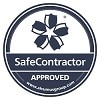If our standard turnstile offerings do not meet your requirements. We can provide you with a high quality custom built solution.
Concept to Design
Our in house CAD designer will sit down with you and talk through your requirements. From this discussion, we will design a bespoke turnstile taking into account your hardware and aesthetic requirements.
From an initial meeting brief our in house designers produce 3D models for proof of concept. This process uses the latest 3D modelling software to check that your model and its components will work according to your design.
We are able to check aspects such as motion and collision, stress, vibration, buckling, and heat interfaces between components to show where these are most likely to fail, and correct the design accordingly.
Once the design is finalised the 3D files are used to download the manufacturing data required by our state of the art manufacturing equipment. By using digital prototyping along with our precision manufacturing the product that you see on paper is exactly what is produced.
The Brief.
The T7 Turnstile Project case study
The turnstile T7 was developed as part of a complete access control system for stationary or mobile operation. The T7 consists essentially of a motor-operated drive unit with locking arms, and a terminal with readers for different media. Terminal and drive are firmly connected.
Propulsion
The microprocessor-controlled drive unit is installed in a powder-coated stainless steel housing and drives the locking arms with a 24V DC motor. Presenting a valid ticket, the motor rotates the arms a bit in access direction to indicate the approval. By moving the arms in walking direction or movement detection by an infrared sensor, the motor is activated in access direction. After access is completed, the arms are locked through a magnetic brake in the idle position.
The locking position is blocked by a magnetic brake, which is released upon entry. There are two versions available:
• Arms can be rotated in case of power failure [Standard] • Turnstile is blocked during a power failure [Option]
The motor-controller is connected via a data line to the terminal. The control commands are transmitted from the terminal processor. As an alternative, the turnstile can be operated by pushbuttons (release without card). Release via command by a PC is also an option.
The development of the drive unit was focussed to reliability and flexibility. The drive can be connected via a serial interface to a PC. The complete configuration of the drive is done via software (Windows) and is then transferred to the motor-controller’s MPU. The same connection may also be used to update the processor with a new firmware. Updates can be done on site.
The locking arms are manufactured from stainless steel tube (diameter 35 mm). In normal operation, they are locked in the drive cylinder. For easy transport or free passage the arms can be unlocked with a special tool.
Terminal
The microprocessor-controlled terminal is equipped with a barcode reader [imager] which supports all common 1D and 2D codes. The position of the scanner allows the use of different size tickets [print@home] as well as the use of smartphones [mobile tickets]. Optionally an RFID module can be added, to read standard transponders in 13.56MHz or 125KHz technology.
Visual feedback
The terminal features an integrated light ring, which shows the turnstiles operating status to users and staff on both sides. Various color LED’s are used [blue, red, green]. The light effects can be freely configured. On the top of the terminal a display [LCD: Liquid Crystal Display] is integrated to show messages in plain text.
The terminal is connected via a 2-wire bus [RS.485] with a control computer [host]. Up to 128 turnstiles can be connected to a single bus [multidrop].
The terminal software was designed for ‘online’ and ‘offline’ operation. The terminal’s reading device [Barcode, Transponder] collects the data and transmits it to the host. After check by the host, the system grants or denies access. If the host or the server fails, the terminal switches to offline mode, performs basic checks and stores the numbers insisde a longterm memory module After next host contact the data is automatically transferred to the server. The transfer will take place in the normal polling cycles. The offline bookings from the control software are written to the database and the log files, that all data are available for evaluation.










